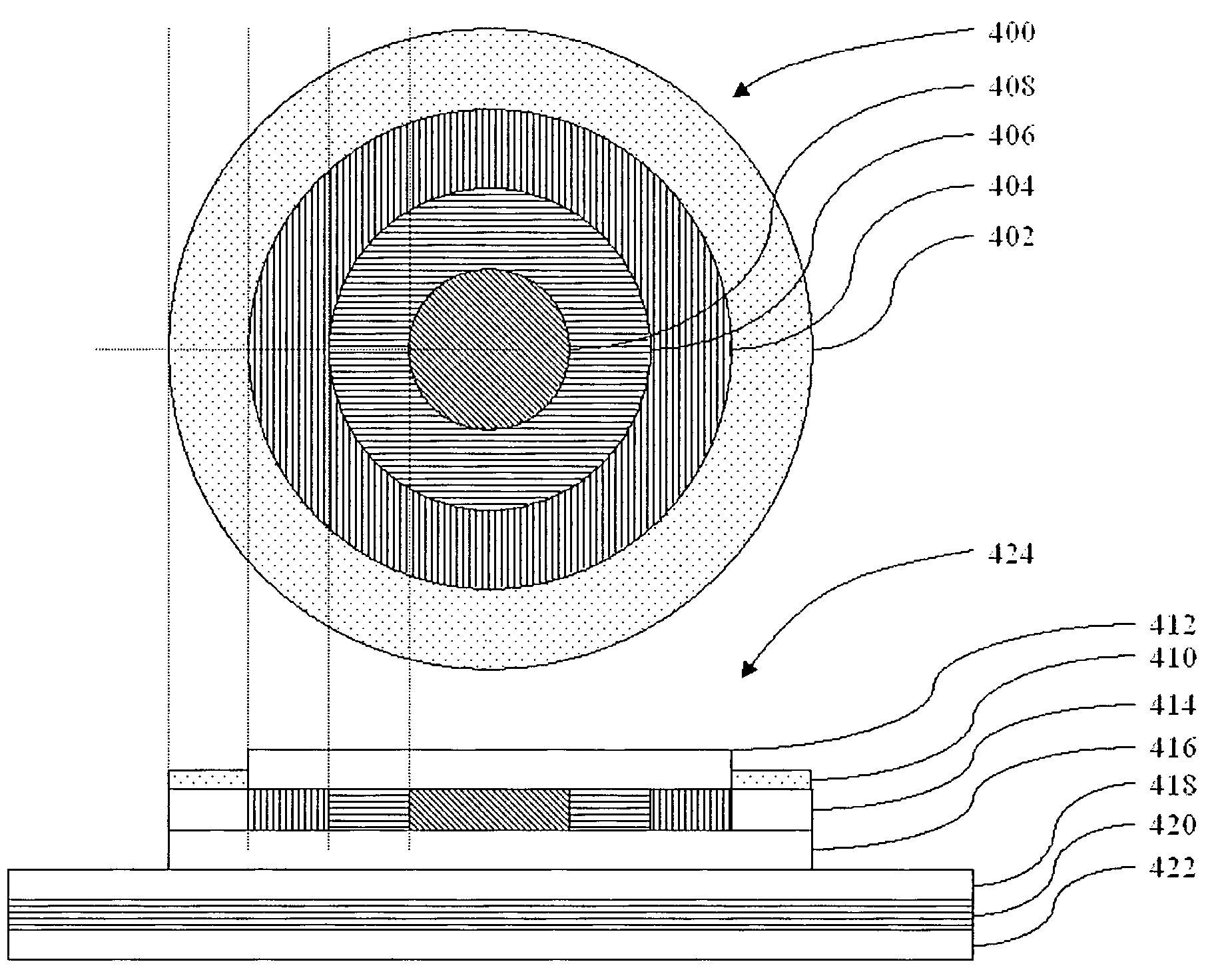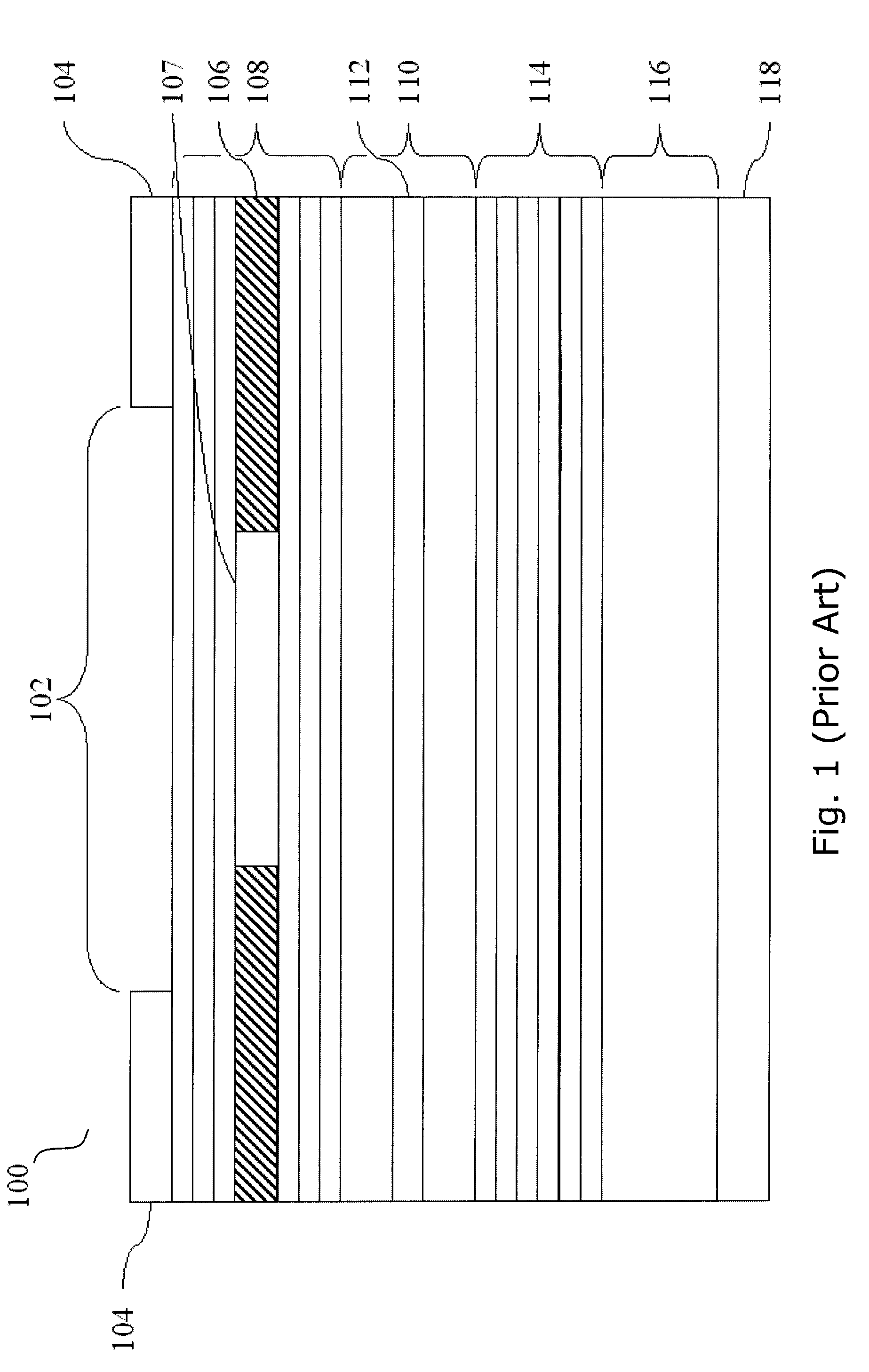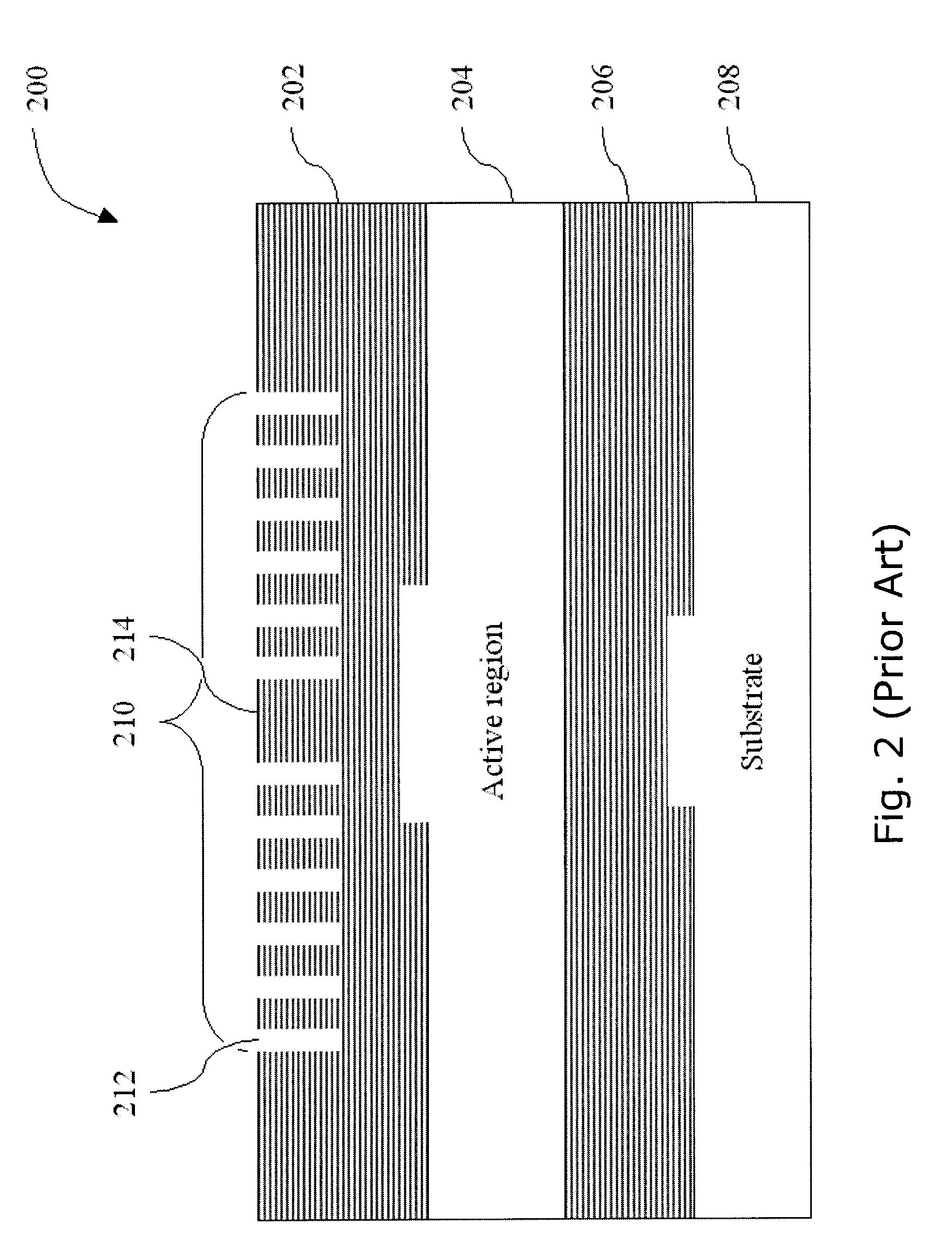Single-mode photonic-crystal VCSELs
a photonic crystal and single-mode technology, applied in the direction of laser cooling arrangements, laser details, electrical equipment, etc., can solve the problems of reducing the yield of devices, and reducing the single-mode operating regime. , to achieve the effect of suppressing or preventing laser action in modes, promoting lasing in fundamental modes, and suppressing or preventing multi-mode lasing
- Summary
- Abstract
- Description
- Claims
- Application Information
AI Technical Summary
Benefits of technology
Problems solved by technology
Method used
Image
Examples
Embodiment Construction
[0105]FIG. 4 illustrates the top-view 400 and cross sectional view 424 of a micro / nano-structured vertical cavity surface emitting laser. The electrical contact region 402 on the top-view and region 410 in the cross-sectional view surround the mode confinement region (MC-region) 404, Mode Shaping region (MS-region) 406 and the Light aperture region (LA-region) 408. The LA-region, MS-region and MC-region are also indicated by the hatched areas layers 414 of the cross-sectional view 424. However, the different thickness and the applied micro / nano-structuring is not indicated on this figure. Below layers 414 we have a partial semiconductor DBR top mirror or spacer layer 416. Above layers 414 the top mirror is completed by regrowth of a semiconductor DBR top mirror or dielectric top mirror 412. The FIG. 424 also shows the active layer 418, DBR bottom mirror layers 420 and the substrate 422.
[0106]The MS-region (region 406) has a long cavity resonance wavelength compared to the cavity res...
PUM
 Login to View More
Login to View More Abstract
Description
Claims
Application Information
 Login to View More
Login to View More - R&D
- Intellectual Property
- Life Sciences
- Materials
- Tech Scout
- Unparalleled Data Quality
- Higher Quality Content
- 60% Fewer Hallucinations
Browse by: Latest US Patents, China's latest patents, Technical Efficacy Thesaurus, Application Domain, Technology Topic, Popular Technical Reports.
© 2025 PatSnap. All rights reserved.Legal|Privacy policy|Modern Slavery Act Transparency Statement|Sitemap|About US| Contact US: help@patsnap.com



